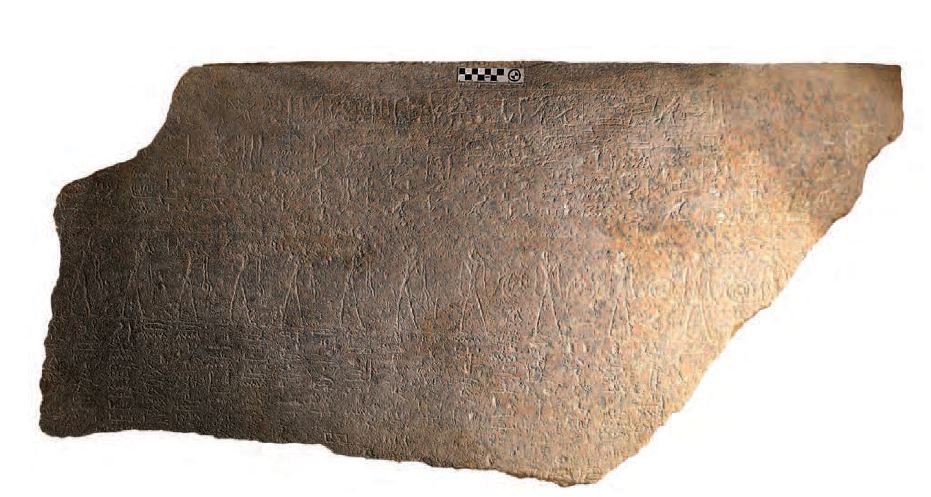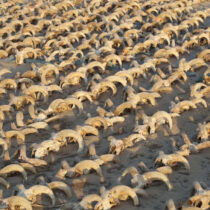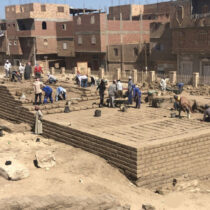A sarcophagus fragment from Abydos, Egypt, has been identified as part of the lost outer sarcophagus of Pharaoh Ramesses II (1279- 1213 BCE), which had been removed from the royal tomb at the Valley of the Kings in Luxor, to be re-used at least twice. This is what Egyptologist Frédéric Payraudeau (Sorbonne University, France) claims through a study titled “Le sarcophage de Ramsès II remployé à Abydos!” and published in the journal Revue d’Égyptologie 73 (2023).
Payraudeau reexamined a piece of red granite reused as a door threshold at the 5th c. CE monastery of Apa Moses during excavations led by the SCA’s Ayman Damarany at South Abydos in 2009. The piece, published by Damarany and Kevin Cahail in 2016, was identified as part of a sarcophagus used by the 21st Dynasty High Priest of Amun (and acting monarch of Upper Egypt), Menkheperre.
Still, the experts noted that Menhkeperre was not the first person to use the sarcophagus. His name – in a cartouche – was reinscribed over another name, the one of the object’s original owner. “Stylistic and textual features date the original creation of this sarcophagus to the 19th dynasty”, noted Damarany and Cahail, without identifying the original owner at the time. Now, according to a press release by Sorbonne University, Payraudeau examined the re-carving of the hieroglyphic signs, confirming these contained the cartouche of Ramesses II himself.
It was known that the tomb of Ramesses II in the Valley of the Kings had been entirely emptied of its contents, and the mummy had been transferred to a wooden coffin since the 21st Dynasty (1060 – 943 BCE). It is now certain, though, that the great king had originally been interred in a series of coffins nested within one another: the mummy was placed in a golden coffin (now lost), which, in turn, was placed in an inner sarcophagus made of alabaster, still found in the tomb. The alabaster sarcophagus, however, was placed in another, now identified with the one where this red granite fragment comes from.
After the tomb’s pillaging, the priests led by High Priest of Amun Pinudjem I reburied Ramesses II’s mummy alongside the ones of other royals, in different locations, the last one being the Royal Cache found in 1881. However, the outer sarcophagus was usurped by Pinudjem I’s son, Menkheperre, who transferred it to Abydos to use in his tomb.
It has to be stated that the practice was not new. According to the press release, at the time (21st Dynasty onwards), the funerary furniture of previous pharaohs, whose tombs had been looted, was reused by later rulers. Pharaoh Psusennes I (1047 – 1001 BCE), whose tomb was found intact at Tanis, in the Delta region, reused one of the sarcophagi made for Ramesses II’s son and successor, Merenptah. Still, recycling and upcycling of royal funerary items were a thing well before the 21st Dynasty, especially in transitional periods. It is interesting to know that even in Tutankhamun’s tomb, many items were likely reused, as they were originally made for previous royals during the Amarna period.





